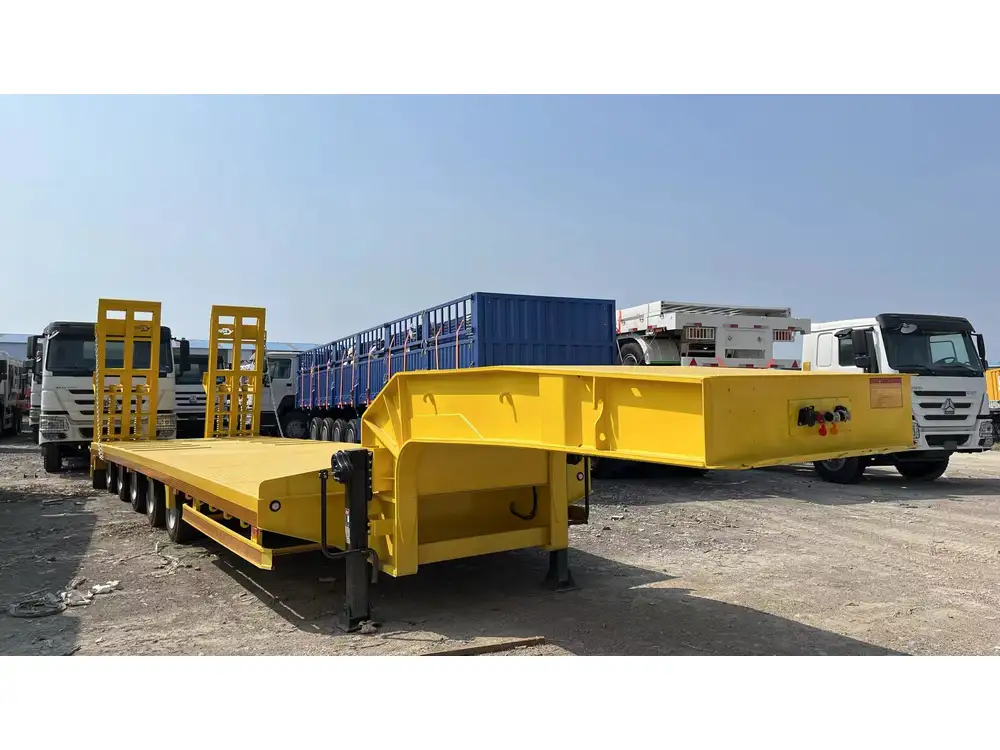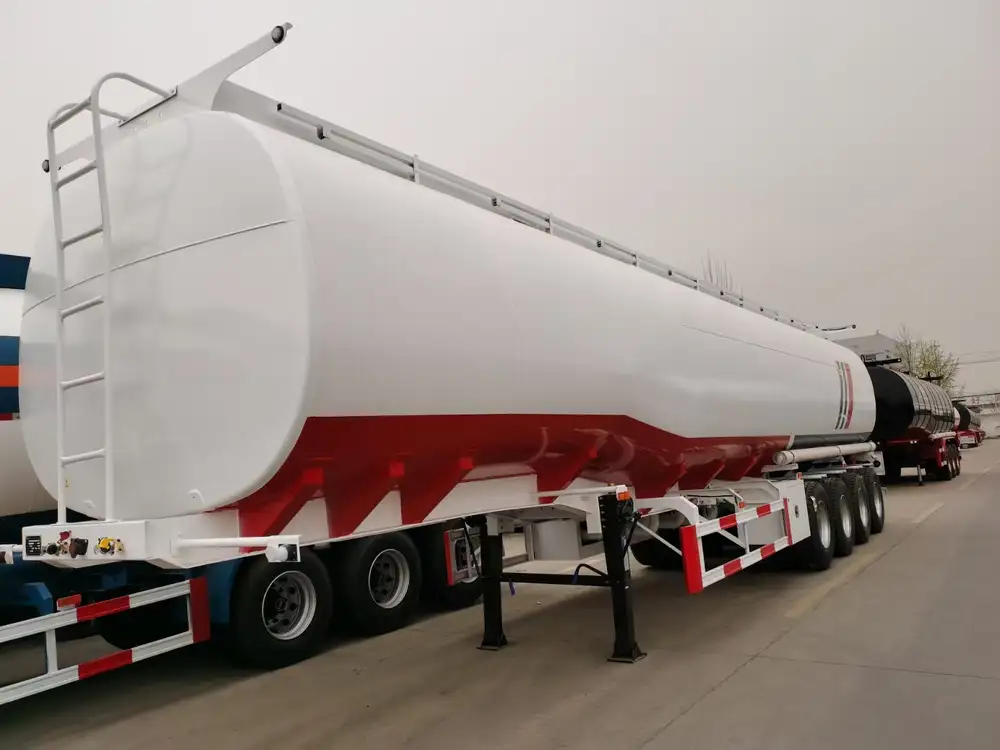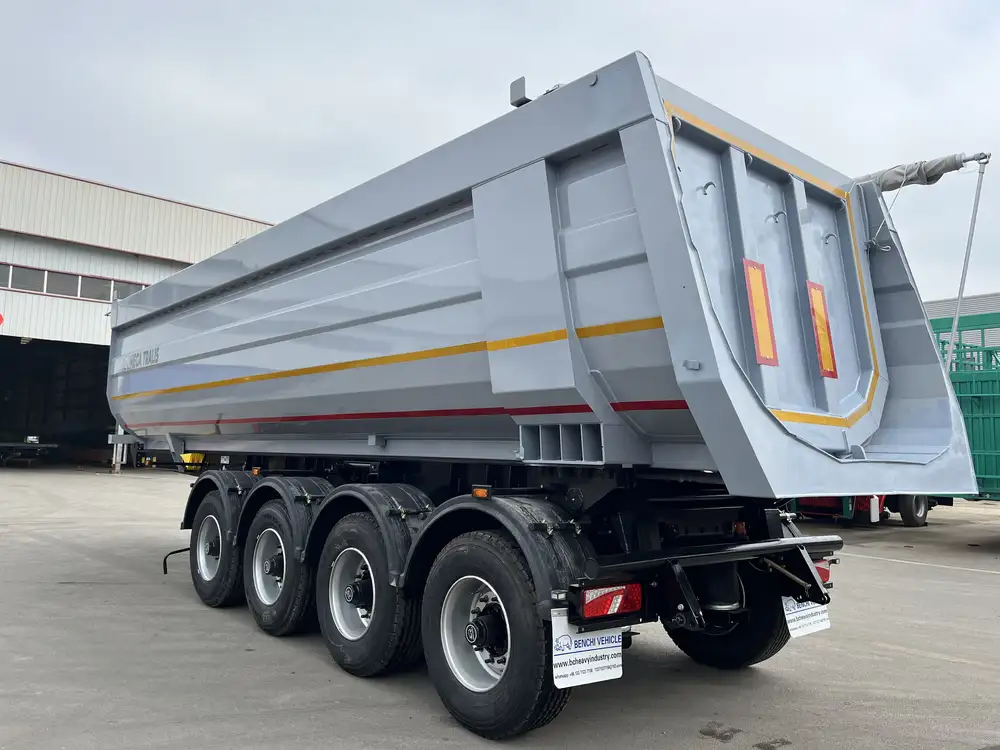In the ever-evolving industry of transportation and logistics, the ability to transport fuel efficiently and safely is pivotal. Semi-trailer manufacturers often face inquiries about the potential for integrating gas pumps into tank trailers. This article explores the feasibility, advantages, and considerations regarding the installation of gas pumps on tank trailers, alongside a detailed analysis of regulatory compliance, safety measures, and operational efficiency.
Understanding Tank Trailers: Design and Functionality
Tank trailers, also known as tankers, are specialized vehicles designed to transport various liquids, including fuel, chemicals, and food-grade materials. The construction of these trailers involves robust materials intended to withstand the pressures and corrosive properties of the liquids being transported. Here’s a glance at the components integral to tank trailers:
| Component | Description |
|---|---|
| Tank | The primary container that holds the liquid, usually cylindrical for even weight distribution. |
| Baffle Plates | Used to minimize sloshing of liquid during transport; enhances stability. |
| Pump System | Mechanism that facilitates the transfer of liquid in and out of the trailer. |
| Valves | Control the flow of liquid; must adhere to industry standards for safety. |
| Chassis | The structural framework that supports the tank; typically made of durable steel or aluminum. |
Can You Install a Gas Pump on a Tank Trailer?

Exploration of Integrative Possibilities
Yes, installing a gas pump on a tank trailer is not only possible, but it also presents numerous advantages in the context of operational efficiency. However, the feasibility of such an integration is contingent upon several factors including the type of trailer, the specific requirements of the transport operation, and compliance with safety standards.
Enhancing Operational Efficiency
Integrating a gas pump into a tank trailer offers several operational benefits:
- On-Site Refueling: One of the most compelling advantages is the capability to refuel equipment or vehicles on-site, significantly reducing downtime and logistical complexities.
- Cost Efficiency: By minimizing the need for separate refueling services, businesses can cut operational expenses, enhancing overall profitability.
- Versatility: A trailer equipped with a gas pump can cater to various clients or industries, expanding the market reach of transportation services.
Types of Pumps Suitable for Tank Trailers
When considering gas pump installation, it’s imperative to select pumps that are compatible with the specific requirements of the tank trailer. Here are some common types of pumps:
| Pump Type | Description |
|---|---|
| Vane Pumps | Ideal for low-viscosity fuels; provide steady flow rates. |
| Gear Pumps | Excellent for high viscosity liquids, delivering consistent pressure. |
| Diaphragm Pumps | Suitable for hazardous materials; can handle various fluid types. |
| Centrifugal Pumps | Common for high-flow applications; requires a priming mechanism. |

Technical Considerations for Installation
To effectively install a gas pump on a tank trailer, several technical aspects must be considered:
- Placement: The pump should be strategically placed to facilitate easy access while maintaining the center of gravity for stability during transport.
- Power Source: Determine whether a diesel engine or electric motor will drive the pump, based on the operational environment and availability of power sources.
- Hose and Fittings: Ensure compatibility with the pump system to prevent leaks and drips that could pose safety hazards.
Regulatory Compliance and Safety Standards
Navigating Legal Requirements
Transporting fuel involves stringent regulations aimed at ensuring the safety of drivers, cargo, and the environment. Understanding and complying with these regulations is paramount. Here are key aspects to consider:
| Regulatory Body | Description |
|---|---|
| Department of Transportation (DOT) | Establishes standards for vehicle construction and operation within transportation. |
| Environmental Protection Agency (EPA) | Regulates emissions and potential spillage during transport. |
| Occupational Safety and Health Administration (OSHA) | Ensures safe working environments when handling hazardous materials. |

Risk Mitigation Strategies
- Training: Ensure all operators are trained in handling the gas pump system, focusing on emergency protocols and spill management.
- Regular Inspections: Routine inspections of the pumping mechanism, hoses, and valves to identify potential wear and tear, thus avoiding operational hazards.
- Emergency Response Plan: Develop a comprehensive response plan to handle potential spills or accidents effectively.
Problem Solving: Common Questions Addressed
What Are the Costs Associated with Installing a Gas Pump on a Tank Trailer?
The total cost of installation can vary significantly. Factors influencing costs include the type of pump, installation complexity, and regulatory compliance requirements. Here’s a breakdown:
| Expense Category | Estimated Cost Range |
|---|---|
| Pump Purchase | $5,000 – $20,000 |
| Installation Fees | $1,000 – $5,000 |
| Maintenance Agreements | $500 – $2,000 annually |
| Compliance and Permits | $300 – $1,200 |

How Does a Gas Pump Affect the Trailer’s Weight Distribution and Balance?
Adding a gas pump to a tank trailer is likely to impact weight distribution. It is crucial to:
- Assess trailer load capacity to ensure safe transport.
- Modify the design, if necessary, to distribute weight evenly across the chassis.
- Conduct road tests prior to commercial operation to ensure stability under variable payloads.
What Maintenance is Required for a Tank Trailer with a Gas Pump?
Regular maintenance is essential to ensure the safe operation of the tank trailer’s pump system. Key maintenance tasks include:
- Regular Cleaning: Prevent fuel contamination by clearing residue from the pump and hose systems frequently.
- Leak Checks: Regularly inspect all connections and seals for potential leaks to comply with safety standards.
- Pump Calibration: Periodically recalibrate the pump to maintain accurate flow rates, especially critical when measuring fuel delivery for clients.
Conclusion: The Future of Tank Trailer Innovations
The integration of gas pumps into tank trailers is poised to revolutionize the transportation of liquid fuels, ensuring increased efficiency while adhering to stringent safety regulations. As innovations continue to evolve within the semi-trailer manufacturing industry, it’s crucial for manufacturers, operators, and logistics companies to stay abreast of the latest technologies, compliance measures, and market trends.
By grasping the complexities outlined in this guide, stakeholders can make informed decisions regarding the feasibility, installation, and operation of gas pumps on their tank trailers. As the industry progresses, the blend of technology and traditional logistics will redefine operational standards, positioning businesses for future growth and success.



